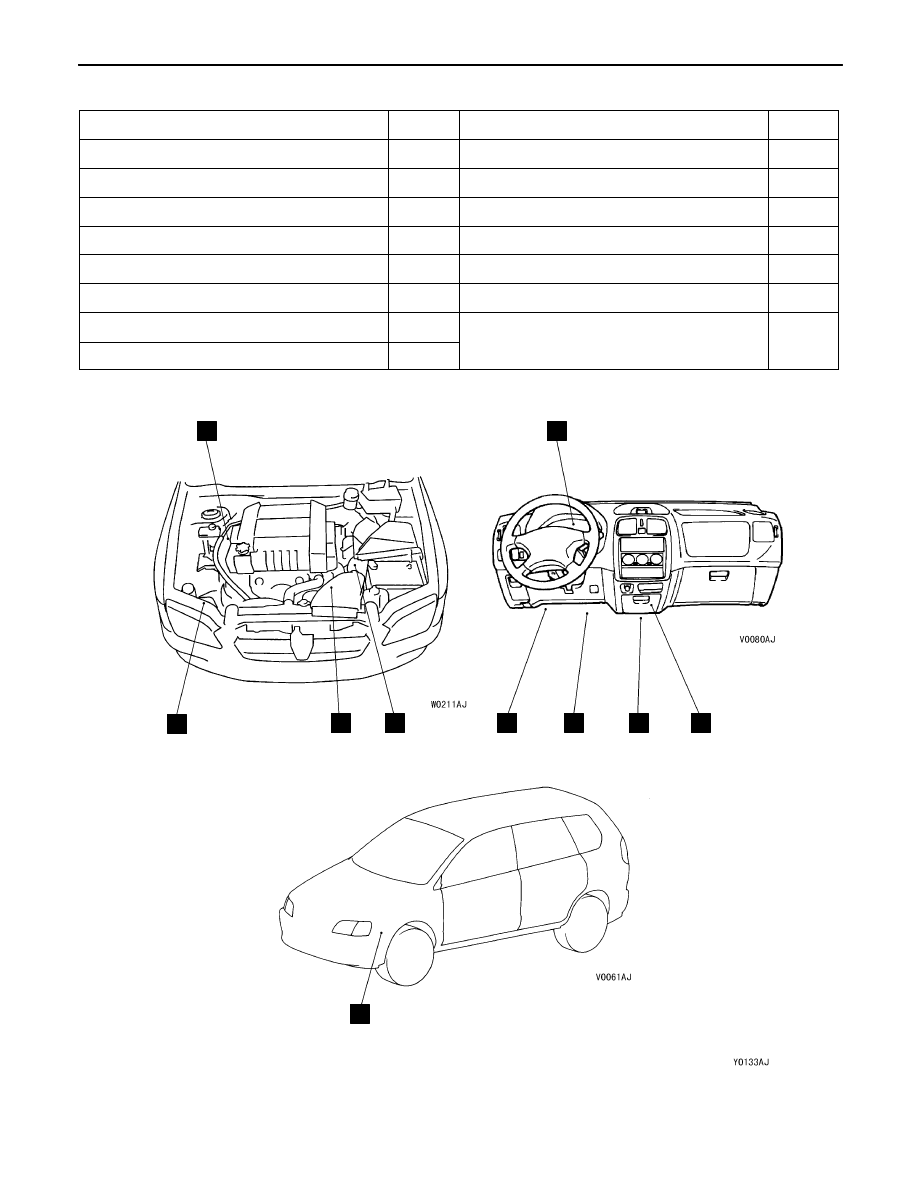Mitsubishi Space Star. Manual - part 120

AUTOMATIC TRANSMISSION –
On-vehicle Service
23-47
A/T CONTROL COMPONENT LOCATION
Name
Symbol
Name
Symbol
Accelerator position sensor
J
Input shaft speed sensor
D
A/T control relay
I
A/T fluid temperature sensor
D
A/T control solenoid valve assembly
D
Output shaft speed sensor
D
Crank angle sensor
A
Shift indicator lamp
E
Diagnosis connector
H
Stop lamp switch
F
Dual pressure switch
B
Vehicle speed sensor
D
Engine-A/T-ECU
I
Wide open throttle switch
G
Inhibitor switch
C
A
B
C
D
E
F
G
H
I
J